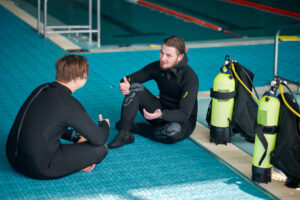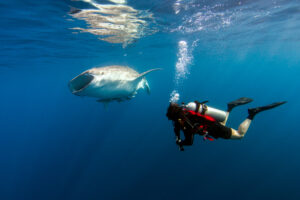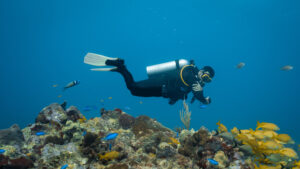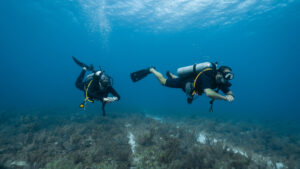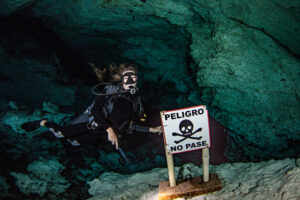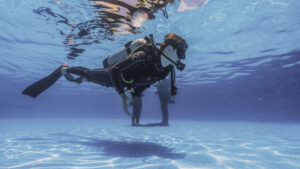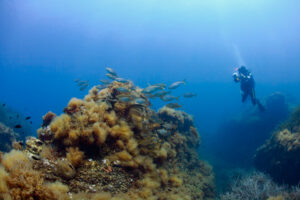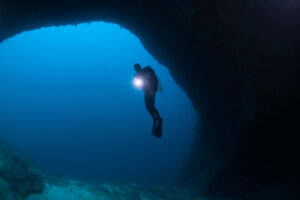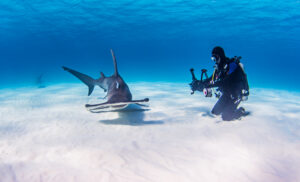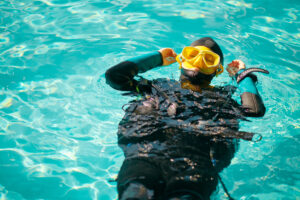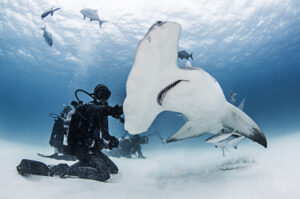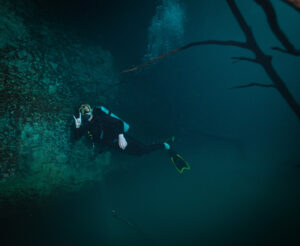What is Snorkeling?
Snorkeling is a popular recreational activity that allows people to explore the shallow waters of oceans, seas, and lakes while swimming at the surface. It offers an accessible and cost-effective way for individuals to engage with the underwater world, observe marine life, and appreciate the beauty of aquatic ecosystems. By using a snorkel, diving mask or swim goggles, and fins, snorkelers can comfortably explore the wonders beneath the waves without the need for extensive training or equipment.
History
Snorkeling can be traced back thousands of years, with evidence of its use found in ancient civilizations such as Greece and Rome. The origins of the modern snorkel can be traced to the 16th century, when Leonardo da Vinci designed a hollow tube to allow divers to breathe while submerged. In the 20th century, advancements in materials and design led to the development of the modern snorkel, diving mask, and fins that are now widely used for recreational snorkeling.
Equipment
Snorkel
The snorkel is a J-shaped or L-shaped tube that allows a snorkeler to breathe while their face is submerged in the water. It consists of a mouthpiece and a barrel that extends above the water’s surface. Modern snorkels often feature a purge valve to facilitate the expulsion of water and a splash guard or dry top to prevent water from entering the tube.
Diving Mask or Swim Goggles
A diving mask or swim goggles provide a clear view of the underwater world while protecting the eyes from irritants such as saltwater and sunlight. Masks typically cover the eyes and nose, creating an air space that allows for proper vision underwater. Swim goggles, although less common, can also be used for snorkeling but lack the coverage and sealing capabilities of a diving mask.
Fins
Fins enable snorkelers to move through the water with greater efficiency and speed. Available in various designs and sizes, fins transform leg movements into thrust, minimizing energy expenditure and allowing snorkelers to cover greater distances with less effort.
Techniques and Safety
While snorkeling requires minimal training compared to scuba diving, proper technique and safety precautions are essential to ensure an enjoyable and safe experience. Key techniques and safety measures include:
Proper Equipment Fit
Ensuring that your snorkel, mask, and fins fit correctly will help prevent discomfort, leaking, and equipment failure while in the water.
Relaxed Breathing
Breathing calmly and slowly through the snorkel helps conserve energy and prevents fogging in the mask.
Buoyancy Control
Maintaining neutral buoyancy is crucial for a comfortable snorkeling experience. Inflatable snorkeling vests or buoyancy compensators can be used to assist with buoyancy control.
Buddy System
Snorkeling with a buddy ensures that assistance is readily available in case of an emergency or equipment failure.
Environmental Awareness
Snorkelers should be mindful of their surroundings, including currents, tides, and potential hazards such as boat traffic or dangerous marine life.
Conservation and Ethical Considerations
As snorkeling allows for up-close interactions with marine life and ecosystems, it is essential to practice responsible and sustainable snorkeling habits. Snorkelers should adhere to the following guidelines to minimize their impact on the environment:
Look but Don’t Touch
Avoid touching or disturbing marine life, including corals, as even the slightest contact can cause harm or stress.
Maintain a Safe Distance
Keep a safe distance from large or potentially dangerous marine animals to avoid startling or harming them.
Use Reef-Safe Sunscreen
Chemicals found in some sunscreens can harm coral reefs and marine life. Opt for biodegradable, reef-safe sunscreens to minimize your impact on the environment.
Don’t Feed the Fish
Feeding fish or other marine animals can disrupt their natural feeding patterns and behavior, leading to long-term consequences for the ecosystem.
Leave No Trace
Be mindful of your waste and ensure you do not leave any litter or debris behind when snorkeling.
Snorkeling is a captivating and accessible way for individuals to explore the underwater world, offering unique and unforgettable experiences in a variety of aquatic environments. By using a snorkel, diving mask, and fins, snorkelers can comfortably observe marine life and ecosystems without the need for extensive training or equipment. With proper technique, safety precautions, and adherence to responsible snorkeling practices, snorkeling enthusiasts can enjoy and help preserve the beauty of the underwater world for generations to come.


